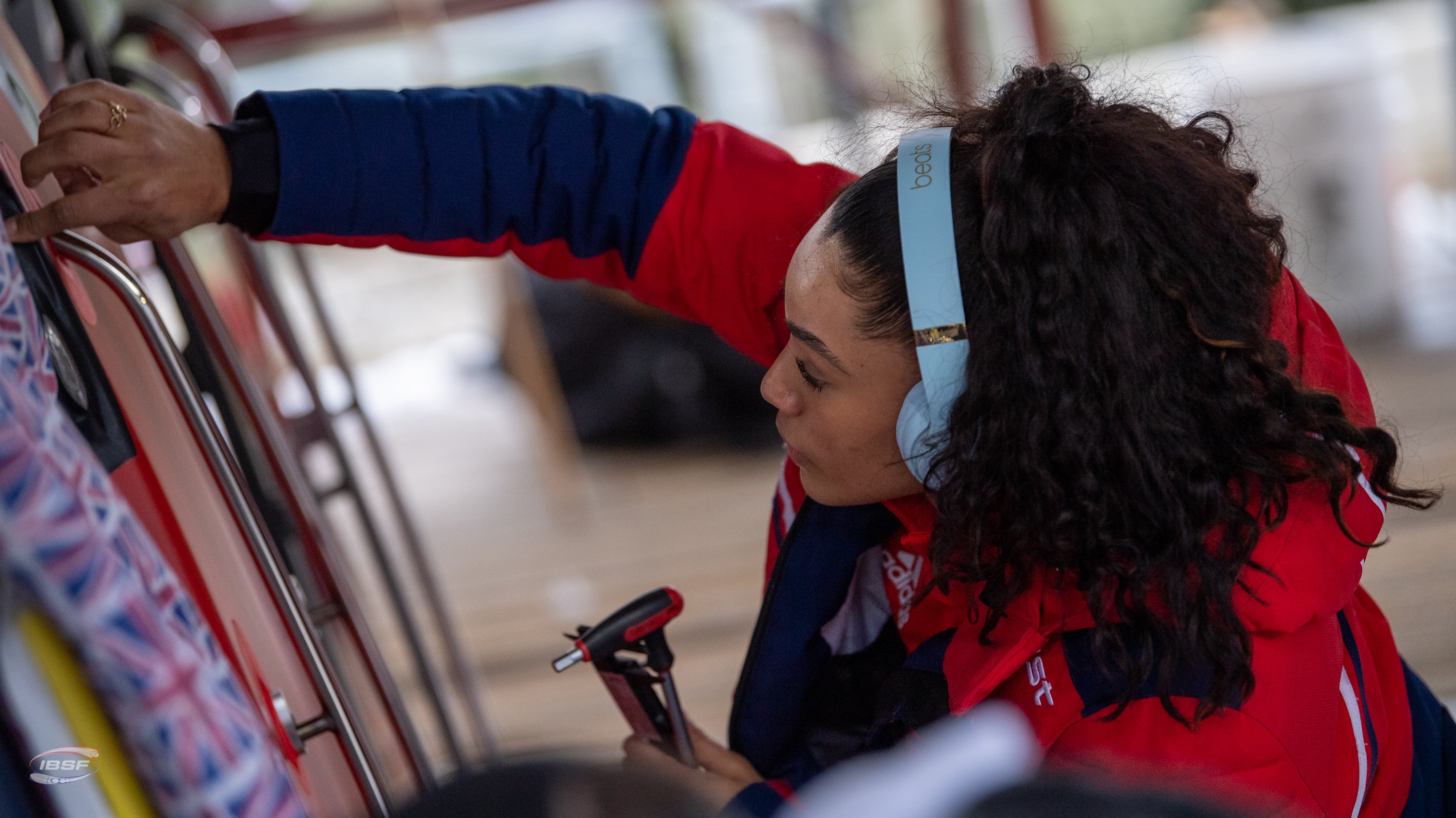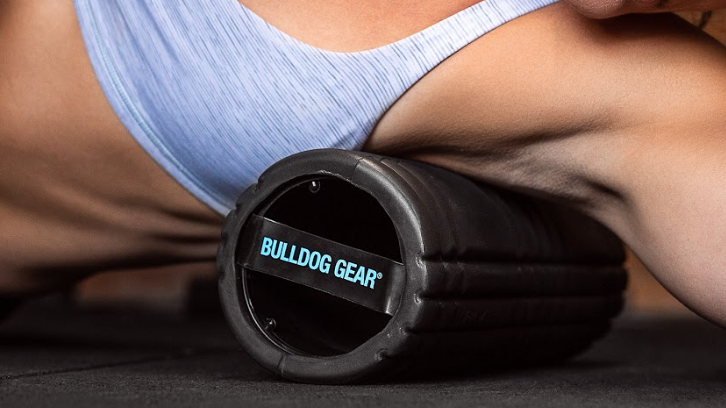
Box jumps are an integral movement to help develop speed strength and vertical jumping power, which will have a great crossover effect on other aspects of training like running and weight lifting. They’re a fun and useful tool to add into your workouts, accessories or to test your maximal lower bodyweight explosive output.
Lets first take a look at what a box jump should look like vs what it shouldn't. We must develop a sound awareness of what our body is doing first before we develop any intensity or play with progressions.
When setting up for a box jump stand fairly close to the box, roughly one foot away. We want to be landing in the centre of the box. As we execute the jump we start by bending the legs with the knees tracking forward above the ankles. Use the strength in your legs and momentum from your arms to force your feet to leave the floor. As we jump, we throw our arms up, this will help keep our chest up and jump as high as possible. When landing on the box, we want to land with our chest tall, knees tracking the toes and the weight in the centre of our feet.
More often than not, especially if we encounter higher rep schemes, awareness goes out the window and we see knees caving in, landing too low in a squat or landing heavily on our toes. If this does happen, we want to be safe in those positions so moving less linear will generally help condition potential awkward landings. However, when performing box jumps our aim is to increase explosive power, not to just get reps done for the sake of reps.
If we are doing higher reps but have a disregard for how we are moving that’s where we’re probably going to encounter niggles or injuries.
Remember:
- Feet hip-width apart.
- Land softly (Think about landing soft and you will. If it’s not working then try lowering the height a first and practice landing with as little noise as you can).
- Land as tall as possible.
- As you land, look up.
- Step down from the box.
Rebounding box jumps are sport-specific in terms of conditioning, not for the general population. Unless you’re a competitor conditioned to training with high volume and have developed the elasticity to add rebounds (jumping down and back up), then I recommend you step down. The last thing you want is to blow your Achilles. Box jumps are a great conditioning tool but you don't want them to put you out of training.
If box jumps scare you, take your time and gradually progress the height. There’s no need to rush. Good movement and being aware of yourself is far more important and impressive than performing them badly for the sake of a number.
Finally, always remember to warm up properly before attempting any box jumps.

Try this warm-up routine to prepare your ankles, knees and hips properly.
Ankle Sequence Warm-Up
3x
10 Lunge to High Knee (Each Side)
20 Skips / Double Unders
10 Lateral Single Leg Jumps
5 Jump Squats


Step-ups are a great way to familiarise taking your body onto a higher platform, while also helping build more unilateral strength. This can highlight stability inefficiencies in the ankle, knees or hips too, so pay attention to how your body moves from one side to the other. This is also a good go-to if a workout involves high rep box jumps and you’re not confident to jump yet but need to keep moving. You can also perform these weighted, wearing a weight vest, holding dumbbells or kettlebells. Perform weighted step-ups to improve leg and unilateral strength.
Watch full video demonstration here.



Start low and gradually build up the height you want to be able to reach.
This is an effective way to build confidence toward jumping on a box. You can use the box and build up the height up by either stacking bumper plates on top of the box or just adjusting the height of a 3-in-1 plyometric box, swapping between 20, 24, and 30 inches. If you can’t yet jump onto a 20-inch box, stack the bumper plates on the floor and start from where you’re able.
Get someone to film you jumping in slow motion so you can see how high you are actually jumping. So often we get scared we’re going on a trip or catch our feet, but we’re actually jumping a lot higher than we realise. This is a great way to instil a little more confidence in your self.



Jump and tuck your knees as high as you can. This will help you get used to the feeling of your feet leaving the ground and can be a good sub for keeping intensity in your workouts. You can also try placing a PVC pipe on the end of a box and jumping over it.
Watch the full video demonstration here.


Many people have a fear of hurting themselves while performing box jumps, using a soft plyometric box is an effective way to help alleviate some of that fear. It’s my favourite piece of kit to help prove to a client what they’re capable of once they let go of their anxieties.
If you want to be able to jump on a wooden box then don't become reliant on the softbox. However, remember the landing will feel a little different and can be a little less stable so it's better to use outside of your workouts.


Test out the max height you’re able to jump to unilaterally and laterally. Playing with variation is fun but will also teach you a lot about your body in terms of any imbalances while challenging your coordination.
Try these three variations:
- Single-Leg Jumps - Overall max height is what you managed to jump equally on each leg.
- Landing Tall - Hips fully extended on landing
- Lateral Jumps - Overall max height is what you managed to jump equally on both sides.
Watch full video demonstration here.



Make a row of boxes with the height increasing as you go. This is a fun variation but also gives you less time to think about the height of the next box in front of you. You might surprise yourself. If you are new to training and box jumping, step down in between bumper plates or boxes.
Watch full video demonstration here.



Jumping from a seated (static) position takes away the stretch reflex that we use from standing, which loads up the hamstrings like a spring before jumping. When starting in a seated position make sure your knees a parallel with your hips, keep the chest up as we drive our legs into the ground and let our feet leave the floor. Let the arms come up and when landing, keep the landing soft. This will increase concentric power output & neural activation.
Watch full video demonstration here.



Focus on standard box jumps, single-leg and lateral jumps before trying these. This particular challenge is far more intense on the joints and surrounding tissues, so you want to have a sound conditioning ability first.
First, you want to see if you can jump to your feet from a kneeling position. You can also make this slightly easier by just kneeling on one leg with the other foot on the ground.
From kneeling, jump to your feet and immediately onto the box in front of you. There should be no pause before the box jump. This will improve speed and reaction time.


Letting your feet leave the floor and jumping to a higher platform for the first time can be scary. From the moment they leave the ground and being in that unknown territory can feel completely out of control which, for a lot of us, holds us back.
My tips are to start small and gradually build up the height in your own time. There is no race to get on to a 20/24/30/40 inch box, so if for now, your max jump is 2, 10 or 12 inches, you’re doing great. Ultimately if your goal is to jump a 20-inch box, it will happen regardless. Let the process unfold and never give up.
Record yourself jumping, even in slow motion. This might be all you need to mentally accept that you’re capable of jumping at the height needed.


- Georgie Gabriel (The Hench Yogi)



